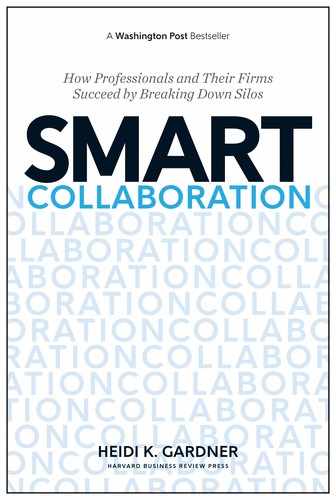NOTES239
24. E. Wesemann and N. Jarrett-Kerr, 2012 Global Partner Compensation
System Survey, Edge International, May 2012 (reported in Regan and Rohrer,
“Money and Meaning,” 93).
25. J. N. Baron and D. M. Kreps, Strategic Human Resources: Framework
for General Managers (New York: John Wiley, 1999).
26. McKinsey Global Institute, The Social Economy: Unlocking Value and
Productivity through Social Technologies, July 2012, http://www.mckinsey
.com/industries/high-tech/our-insights/the-social-economy.
27. Ibid.
28. I thank Paula Young and others at PwC for providing internal doc-
uments and their time and insights during research interviews, all of which
served as the source material for this section.
Chapter 7
1. Of course, biotech—arguably a robust offshoot of the education and
health care sectors—is also a major force in the regional economy.
2. The Dana-Farber Institute’s leaders were incredibly helpful to me
as I conducted my research for a series of Harvard Business School cases
focused on the institute. (Those cases, all published in 2012, are collectively
called “Ganging Up on Cancer: Integrative Research Centers at Dana-
Farber Cancer Institute,” HBS case numbers 9-412-029, N9-412-098, and
5-412-112 [Boston: Harvard Business Publishing, 2012].) I am especially
indebted to Dr. Barrett Rollins, the Dana-Farber’s chief scientific officer,
who shared his thoughts with me and agreed to show up as the (undis-
guised) central protagonist in my cases. My former student Dr. Shereef
M. Elnahal deserves credit for unearthing the research opportunity at the
Dana-Farber; he and Dr. Edo Bedzra played crucial roles in researching
and writing of the HBS cases.
3. See D. H. Maister, Managing the Professional Service Firm (New York:
Free Press, 1993), chapter 27.
4. I’m grateful to the member of my online board of contributors who
offered this insight in one of our online discussions.
5. I thank the member of my online board of contributors who offered this
insight in one of our online discussions.
6. The Center for Nanotechnology in Cancer is a composite, rather than
an actual, center.
7. “Charlie Woods,” “Peter Lendale,” and “Lousie Ratkin” are composite
characters in this case study. They are not real people, but a combination of
real individuals at the Dana-Farber.
8. Barrett Rollins, interview by author, November 2015.
9. Barrett Rollins, interview by author, October 2014.
10. T. Amabile and S. Kramer, The Progress Principle: Using Small Wins
to Ignite Joy, Engagement, and Creativity at Work (Boston: Harvard Business
Review Press, 2011).
Notes.indd 239 06/10/16 12:06 am
240NOTES
11. Sun Tzu, The Art of War, trans. Lionel Giles (New York: Cosimo
Classics, 2010).
12. C. Aiken and S. Keller, “The Irrational Side of Change Management,”
McKinsey Quarterly, April 2009.
13. J. Lorsch and E. McTague, “Culture Is Not the Culprit,” Harvard
Business Review, April 2016.
14. D. A. Kolb, Experiential Learning: Experience as the Source of
Learning and Development, 2nd ed. (Upper Saddle River, NJ: Pearson
Education, 2015).
Chapter 8
1. Think, for example, of recent cases in the energy and mining sectors.
Companies that relied solely on legal title, without determining whether key
community stakeholders believed that title was legitimate, soon ran into
trouble.
2. If any of your clients have undergone any M&A activity within the last
two years, it’s guaranteed that they are still learning about other parts of their
own organization. Help your contact become a hero by getting him or her up
to speed faster about opportunities, risks, and potentially helpful connections
elsewhere in the company.
3. See, for example, R. Reagans and E. W. Zuckerman, “Networks,
Diversity, and Productivity: The Social Capital of Corporate R&D Teams,”
Organization Science 12 (2001): 502–517; S. Wuchty, B. F. Jones, and B. Uzzi,
“The Increasing Dominance of Teams in Production of Knowledge,” Science
316 (2007): 1036–1039.
4. J. Kolko, “Design Thinking Comes of Age,” Harvard Business Review,
July 2015.
5. Professionals who are skeptical about the value of collaboration in
clients that are dominated by a procurement function might be surprised to
learn that this example was provided to me by a procurement manager!
6. Of course, this strategy has a limit: smart clients will always maintain a
portfolio of professional providers so that they can lower the risk of becoming
overly dependent on a single supplier. In some cases, such as auditing, there are
related regulatory constraints to consider. Overall, though, most professional
service firms can provide the expanded expertise that will meet their clients’
need to simplify their vendor base.
7. Harvard Law School, Center on the Legal Profession, “Perspectives
from a General Counsel: Jennifer Daniels of the Colgate-Palmolive Company,”
The Practice, September 2015.
Notes.indd 240 06/10/16 12:06 am
..................Content has been hidden....................
You can't read the all page of ebook, please click here login for view all page.
